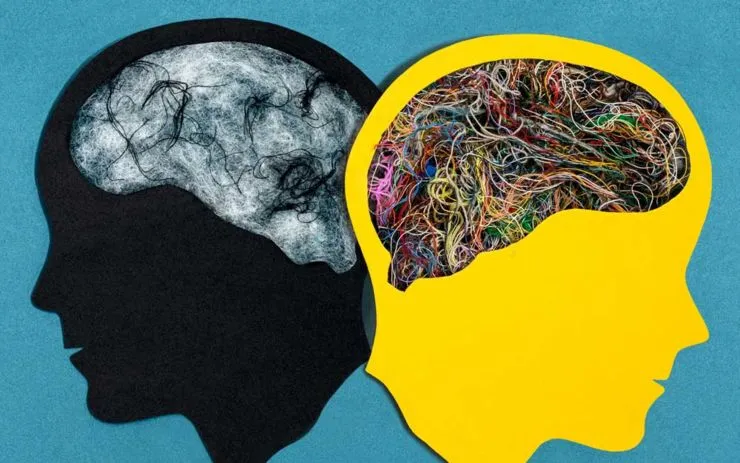Mood disorders and personality disorders affect millions of people throughout the world. Though some disorders in each of these categories share certain characteristics, there are a number of important differences between mood vs. personality disorders.
What Are Mood and Personality Disorders?
When comparing and contrasting mood vs. personality disorders, it can be helpful to begin by reviewing a few basic facts about each category.
What Are Mood Disorders?
The category of mood disorders includes mental health conditions that primarily affect a person’s emotions, energy, and attitude. Examples of mood disorders include:
- Bipolar I disorder
- Bipolar II disorder
- Cyclothymic disorder
- Disruptive mood dysregulation disorder (DMDD)
- Major depressive disorder (MDD)
- Persistent depressive disorder
- Postpartum depression (PPD)
- Seasonal affective disorder (SAD)
Depressive disorders can cause people to experience symptoms such as pervasive sadness, low self-esteem, lack of motivation, exhaustion, and recurrent thoughts of death and dying. The main differences among the depressive disorders listed above are the intensity and duration of these symptoms.
DMDD, which is typically diagnosed in children and adolescents, is marked by anger and irritability. These symptoms may present in verbal outburst and acts of aggression.
Depending on which type of bipolar disorder a person develops, they may experience manic, hypomanic, and/or depressive symptoms. (Though it may not be obvious from the list above, cyclothymic disorder is one of the three types of bipolar disorder.)
Manic and hypomanic symptoms include dramatic increases in energy and motivation, inflated self-confidence, little to no apparent need for sleep, racing thoughts, and impulsivity.
What Are Personality Disorders?
According to the fifth edition of the Diagnostic and Statistical Manual of Mental Disorders (DSM-5), a personality disorder is “an enduring pattern of inner experience and behavior that deviates markedly from the expectations of the individual’s culture.” The DSM-5 also notes that the symptoms of personality disorders are pervasive, inflexible, and the source of considerable distress and/or functional impairments.
The personality disorders section of the DSM-5 includes 10 conditions, which are further divided into three clusters.
Cluster A personality disorders can cause people to be perceived as eccentric or odd. There are three disorders in this cluster:
- Paranoid personality disorder
- Schizoid personality disorder
- Schizotypal personality disorder
Cluster B includes disorders that are characterized by excessively dramatic, erratic, or emotional symptoms. The four Cluster B personality disorders are:
- Antisocial personality disorder
- Narcissistic personality disorder
- Borderline personality disorder
- Histrionic personality disorder
Cluster C personality disorders are associated with feelings of anxiety and fearfulness. The three disorders in this cluster are:
- Avoidant personality disorder
- Obsessive-compulsive personality disorder
- Dependent personality disorder
Similarities Between Mood vs. Personality Disorders
Given the range of conditions that fall into the categories of mood disorders and personality disorders, it’s understandable that they are quite distinct from each other. However, they do share some common features. For example:
- The conditions in both categories can cause considerable distress, to the point that a person may be unable to live a productive and satisfying life if they don’t get proper treatment.
- Some mood and personality disorders can increase a person’s risk of substance abuse and addiction.
- A history of untreated trauma can be a risk factor for many mood disorders and some personality disorders (especially borderline personality disorder).
- Both borderline personality disorder and bipolar disorder can involve impulsivity and other manic symptoms.
Another important similarity between these categories is that both mood disorders and personality disorders are treatable conditions.
Differences Between Mood vs. Personality Disorders
Of course, the fact that mood disorders and personality disorders are separate categories indicates that these conditions are fundamentally different. The following are examples of some of the more significant differences between mood disorders vs. personality disorders:
- Mood disorders occur more frequently than personality disorders do. Among adults in the United States, experts estimate that the lifetime prevalence of depression is 18.4% and the lifetime rate of bipolar disorder is 4.4%. The most common personality disorder, borderline personality disorder, affects about 1.4% of adults.
- In general, the symptoms of mood disorders involve an individual’s relationship with their own feelings, while the symptoms of personality disorders have a stronger impact on how a person interacts with others.
- With the exception of borderline personality disorder, most personality disorders don’t involve dramatic swings in emotions, energy levels, and related characteristics. These swings are much more common among people who have mood disorders.
- The symptoms of mood disorders can often be eased by medications such as antidepressants, antipsychotics, and mood stabilizers. No medications have yet been developed to treat personality disorders.
Find Treatment for Mood or Personality Disorders in Atlanta
If you or someone in your life has developed a mood disorder or a personality disorder, please know that help is available. Peachtree Wellness Solutions offers customized mental health services at the residential, partial hospitalization, and intensive outpatient levels.
Our mental health treatment center in Atlanta, Georgia, is a serene environment where patients work in close collaboration with a team of experienced and dedicated professionals. We take the time to fully assess each person’s needs, then we develop personalized plans to help them achieve their objectives and experience improved quality of life.
Every step of the way, we encourage all patients to play active roles in all aspects of their treatment, so that they can take ownership of their journey to improved health.
To learn more about our programs and services or to schedule a free assessment, please visit our Admissions page or call us today. We look forward to answering all your questions and helping you decide if Peachtree Wellness Solutions is the perfect place for you or your loved one.






